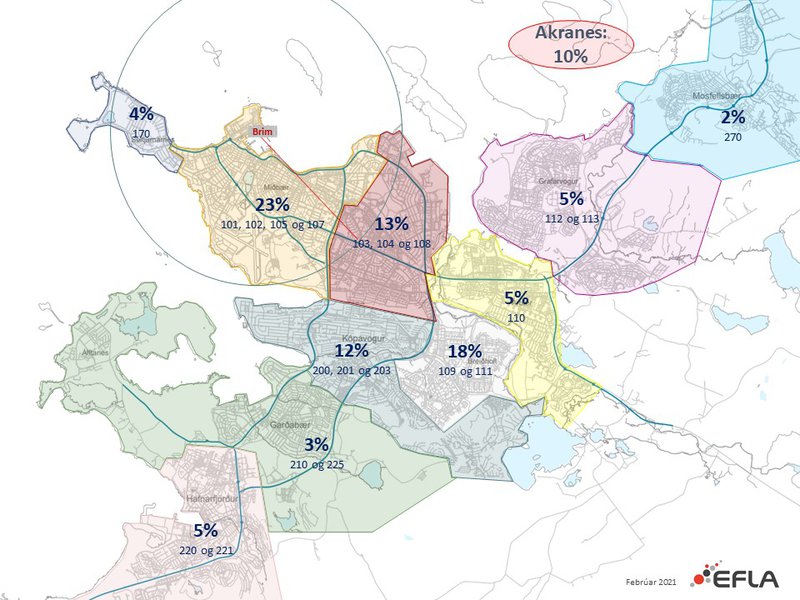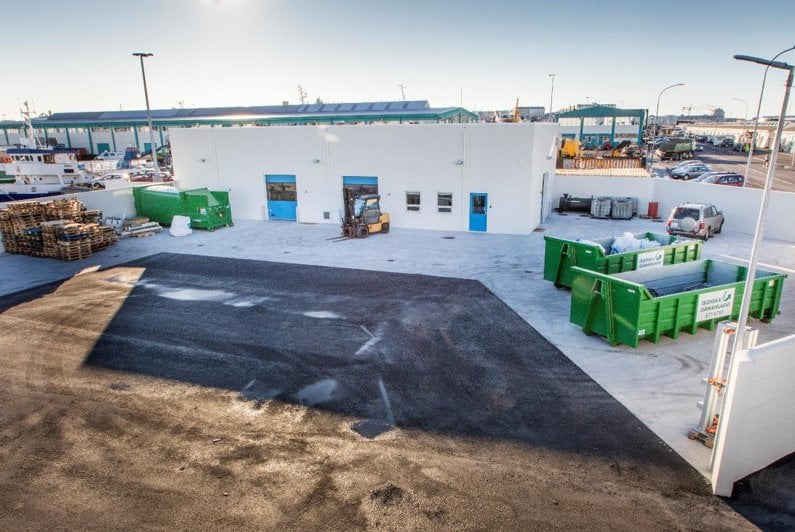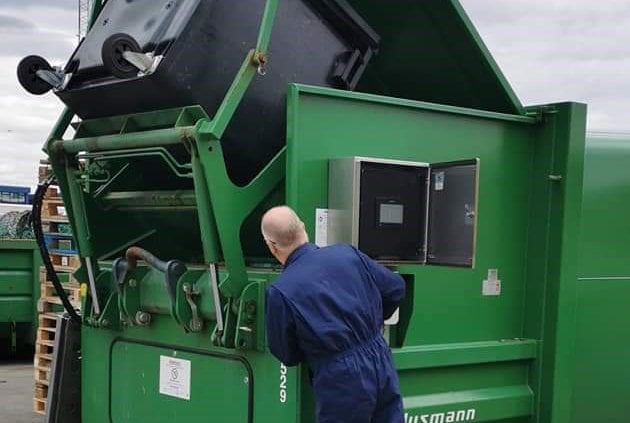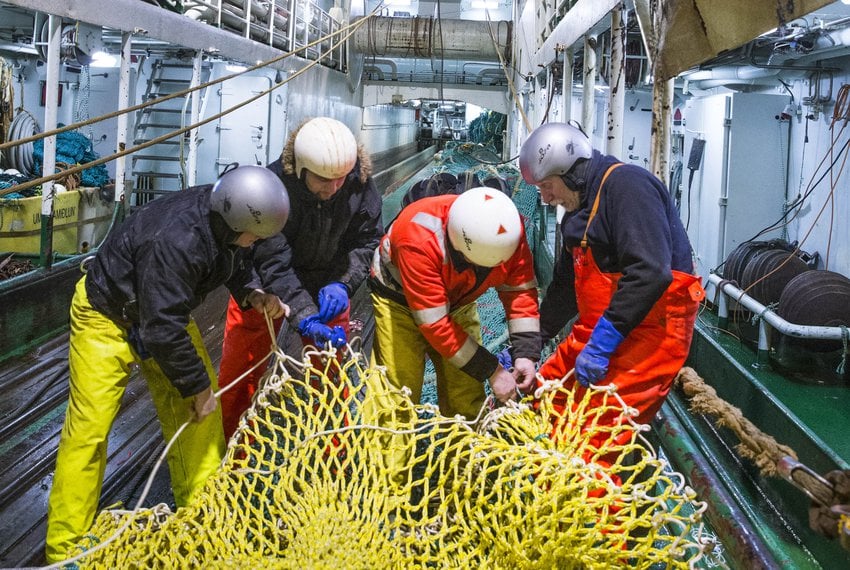FUEL
Fuel use by the vessels of Brim has been significantly reduced following mergers with a number of fisheries companies since 1985. The restructuring has meant that well over 10 vessels have been removed from operation. Brim had eight vessels in operation in 2020 along with one hook-and-line boat, a total of nine, which this is the same number as operated in 1985. These mergers have meant that the company’s quota has almost tripled even though the number of vessels has not increased. Less fuel use results not least from the strong fisheries management system that has had the result of building up strong fish stocks. There have been comparable developments among other fisheries companies throughout Iceland.
Fewer and more efficient vessels utilize fuel better than before; with the renewal of the fleet, Brim has completely discontinued the use of heavy fuel oil and at the same time increased the use of more eco-friendly energy sources such as connecting vessels to land-based electricity and heating utilities when they dock. The same applies to the company’s fish meal plants, which were previously run on fossil fuels but are now for the most part run on electricity. This is also true of other processing plants on land, which have long been run on electricity and have been developed to fully utilize all raw materials, minimise waste and generate increased value at the same time.
Extensive technological advancements have been made over recent years, and considerable new knowledge and expertise has been gained in the fisheries industry. In addition, there has been considerable progress in fish-finding technology, developments of fishing gear, fishing techniques and the handling of catches on board vessels. For these reasons, and the improved condition of fish stocks and larger vessels, the catch-per-unit effort (CPUE) has almost tripled during the period.
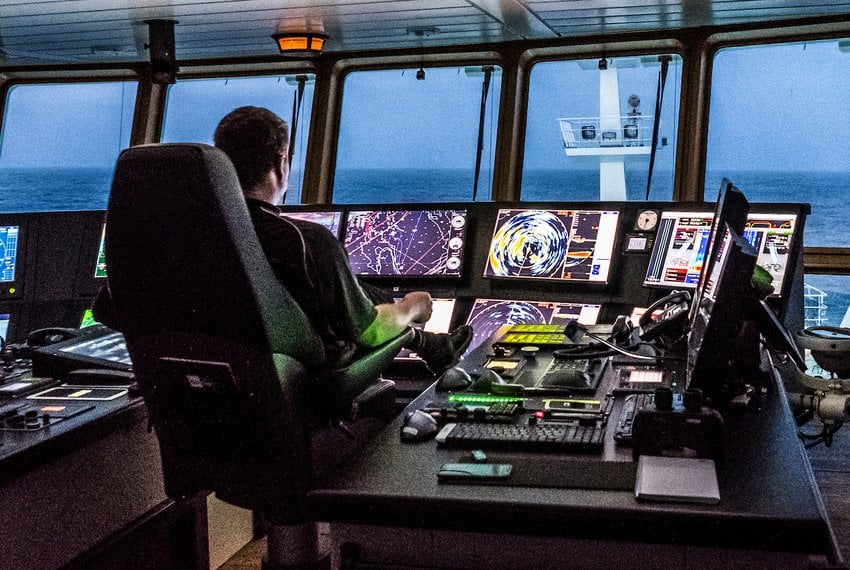
Fuel use
FUEL USE OF SHIPS AND FISHMEAL PLANTS FROM 2005-2020
ENVIRONMENTAL IMPACT OF VESSELS ON CATCHES
The greatest environmental impact of the operation of Brim is due to the fuel use of the fleet. In recent years, the company has systematically worked on analysing carbon footprints from fishing to processing, together with increased use of environmentally friendly ships’ fuels. It should be noted that a number of variables can affect the calculation of fuel use, such as the composition of catches, catches and fishing patterns of individual vessels, as well as the weather. It is important to take these factors into account when concluding results based on figures published here and comparisons between years.
The total use of the fleet during the year was almost 22.5 million litres, which emitted 60 thousand tonnes of CO2 equivalents, catching 128 thousand tonnes. This is approximately 82% of the total emissions of the company, which is 78 thousand tonnes. All Brim vessels now use MGO or DMA fuels which have a sulphur content of 0.1%.
- The share of the wetfish trawlers of CO2 equivalents emitted is 16 thousand tonnes, or approximately one-fourth. When the energy intensity of fishing is measured, i.e. how many litres of fuel are required to catch one tonne of fish, the wetfish trawlers are seen to use 281 litres. This is 801 kg of CO2 equivalents per tonne.
- The share of the freezer trawler in carbon emissions during the year was more than 27 thousand tonnes of CO2 equivalents. Energy intensity for fishing on freezer trawlers is somewhat greater, or 350 litres for each tonne. This is 996 kg of CO2 equivalents per tonne.
- The carbon emissions of pelagic vessels during the year was over 21 thousand tonnes of CO2 equivalents. The energy intensity of fishing was 89 liters of oil per tonne, or 255 kg of CO2 equivalents.
ENERGY INTENSITY OF FISHING VESSELS
CO2 EMISSIONS OF FISHING VESSELS PER CATCH UNIT
Numerous variables can affect the fuel use of vessels, most notably
- State of fish stocks.
- Composition of catch.
- Fishing patterns and distances.
- Weather.
It is important to take these factors into account when concluding results based on figures published here and comparisons between years. When comparing fuel use between years, it should be mentioned that blue whiting fishing was harder in 2020 than the previous year because of difficult weather in the first three months of the year. We also had to go further for mackerel. Catch for wetfish trawlers was reduced from the previous year due to weather. They were not fully utilized last summer due to the renovations of the processing plant at Norðurgarður, but catches are usually very good in the summer.
FUEL USE OF FISHMEAL PLANTS
The company’s fishmeal plants, previously run on fossil fuel, are now for the most part electrified. Every effort is made to use electricity instead of fuel when availability allows. The fuel use of fishmeal plants increased from 348 thousand litres in 2019 to 464 litres in 2020, an increase that can be traced to a reduction in unsecured energy from electricity sellers. This year DMA fuel (distillate marine A) was used exclusively, which has a 0.1% sulphur content.
Fuel use per produced tonne of fishmeal from the company’s plants increased between years and went from 4.6 litres/tonne to 6.2 litres/tonne in 2020. The reason was a reduction in electricity on unsecured energy from the electricity seller to the plant in Vopnafjörður.
The total carbon emissions due to fuel use from the company's plants in 2020 were 1,327 tonnes of CO2 equivalents.
The company's goal is to use environmentally friendly fuel. Through agreements for competitive electricity prices to fishmeal plants, we can expect the share of electricity use to increase even more at the expense of fuel use in the future.
TOTAL ENERGY INTENSITY OF FISHMEAL PLANTS
PROMOTE INCREASED USE OF RENEWABLE ENERGY
Icelandic fish meal and oil processing manufacturers have, over past decades, used both fossil fuels and electricity in their operation. In recent years, fishmeal producers have purchased controllable transmission and distribution of electricity. Due to the limited security of transmission and distribution in the electrical system, insecure availability of electricity and fluctuating demands from fish meal processors, fossil fuels have been a necessary back-up source of power in the operation and have replaced electricity when needed. To achieve full electrification, however, significant investments will have to be made in the electricity transmission system in Iceland.
Félag íslenskra fiskimjölsframleiðanda (FÍF) has signed a declaration of intent and entered into an agreement with Landsnet, Rarik and HS Veitur on one hand, and Landsvirkjun on the other, with the goal of promoting increased use of electricity in processing. Thereby reducing the use of energy sources that emit greater carbon footprints and at the same time, increase the likelihood that the goals of the Paris Convention and the action plans of the Icelandic government as regards climate goals will be achieved.
Landsvirkjun's and FÍF's first declaration of intent to promote the continued use of renewable energy in the fishmeal industry was valid from March 2017 to the end of year 2019. During these three years (2017-2019), 584,125 MWh of electricity was used, thus saving the combustion of 56.5 million liters of oil. This reduced the carbon emissions of the fishmeal factories by 168 thousand tonnes of CO2 equivalents. Brim’s share of the total fuel use was 108,991 MWh or 18.66%, which saved the combustion of 10.5 million liters of oil. As a result, the company's carbon emissions decreased by 31 thousand tonnes of CO2 equivalents during the period.
It was decided by signature on June 22, 2020 to extend the previous declaration, as the parties agree to continue working towards the goals described in the previous declaration by Landsvirkjun contributing as much as possible to an increased supply of controllable energy, and to that aim, Landsvirkjun has submitted an application for an exemption to the Competition Authority. FÍF will also continue to encourage members to use renewable energy sources in their operations.
A declaration of intent between FÍF and Landsnet, Rarik, HS Veitur, on electricity transmission and distribution, where the parties will work together toward improvements in climate issues with more efficient use of investments and infrastructure in mind, was signed in 2018 and is still valid.
CARBON TAX ON FUEL
The government’s aim with the imposition of a carbon tax is to harmonize the taxation of fossil fuels with the aim of encouraging energy exchange, reducing greenhouse gas emissions and systematically contributing to energy savings in all areas. The carbon tax is a tax levied on all fossil fuels and is calculated on the basis of each liter of fuel. Thus, the amount of the carbon tax for the year is ISK 11.45 per liter of gas and diesel oil for vessels The comparison shows that from 2015 to 2020, the carbon tax on fuel use has almost doubled.
| Carbon tax | Units | 2020 | 2019 | 2018 | 2017 | 2016 | 2015 |
| Carbon tax, gas and diesel oil | ISK/liters | 11,45 | 10,40 | 9,45 | 6,30 | 6,00 | 5,84 |
| Carbon tax, petrol | ISK/lítra | 10,00 | 9,10 | 8,25 | 5,50 | 5,25 | 5,10 |
| Carbon tax, fuel | ISK/kg | 14,10 | 12,80 | 11,65 | 7,75 | 7,40 | 7,23 |
| Carbon tax, crude oil, etc. | ISK/kg | 12,55 | 11,40 | 10,35 | 6,90 | 6,60 | 6,44 |
| Total carbon tax | þ.kr. | 263.643 | 255.588 | 197.427 | 127.043 | 138.451 | 139.087 |
VEHICLES AND EQUIPMENT
Fuel use of vehicles and equipment is insignificant when compared to that of vessels and plants. It decreased in the period 2019 to 2020 from 47,861 liters to 44,430 liters. A total of 21 vehicles were in operation, a decrease of 1 between years. Brim plans to increase the use of electric vehicles and hybrid cars over the next few years. At the same time, the company has installed charging stations for the vehicles of the company, its employees and guests.
